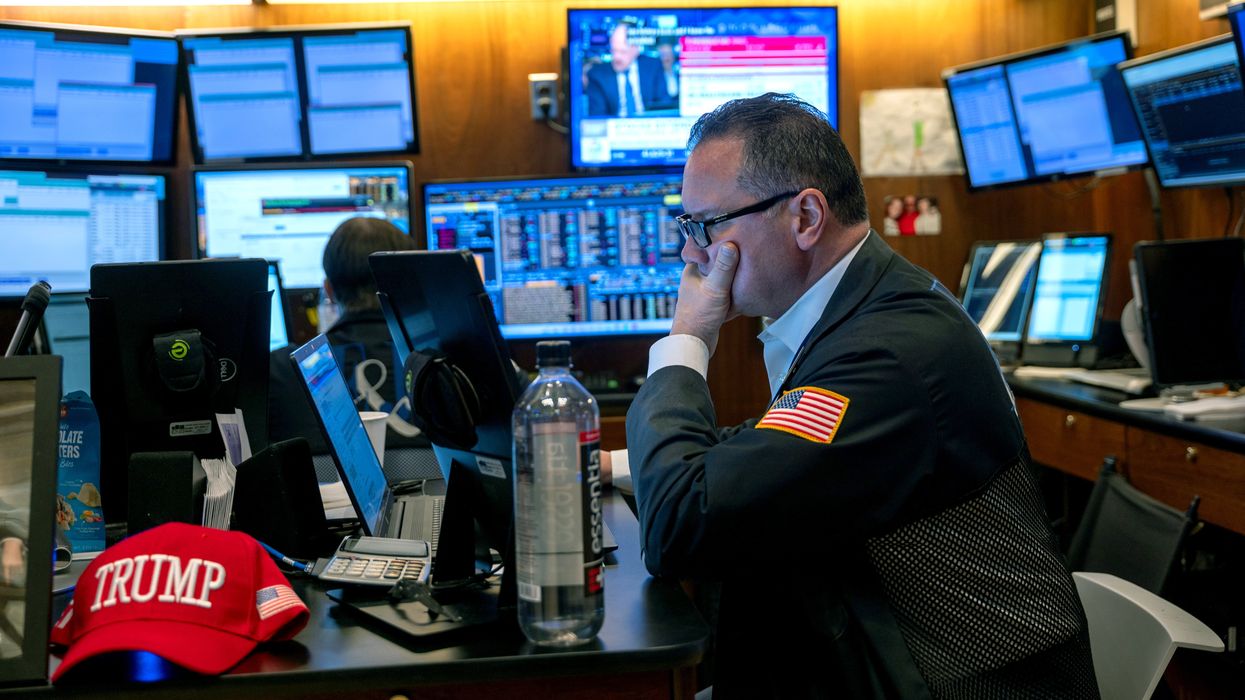The chaos that gripped Wall Street on March 10, 2025, was no accident.
The plummeting stock market, the sharp decline in Bitcoin, and the spike in volatility all pointed to a single, undeniable factor: President Donald Trump’s economic policies, particularly his tariff-heavy approach, have unnerved investors and accelerated fears of an impending recession.
Markets opened in deep red, reflecting the uncertainty and apprehension that have become hallmarks of Trump’s second term. The Dow Jones Industrial Average closed 890 points lower, a 2.08% drop, after initially falling by more than 1,100 points. The broader S&P 500 sank 2.7%, while the Nasdaq Composite tumbled 4%, marking its worst single-day performance since 2022. By the end of the day, it was clear: investor confidence had been shattered, and much of the progress in the stock market since the November presidential election had been wiped out.
The stock market’s downward spiral also showed no signs of stopping for the rest of the week. Over the next three days, the sell-off continued, with the Dow shedding another 600 points, the S&P 500 losing nearly 100 points, and the Nasdaq falling by 280 points.
The primary catalyst? Trump’s erratic and aggressive tariff policies.
Over the weekend, the president refused to rule out a recession, saying in a Fox News interview that the economy was going through “a period of transition.” The uncertainty surrounding these remarks compounded fears that his trade war with major economic partners was spiraling out of control.
In a classic display of unpredictability, Trump has vacillated between imposing and rescinding tariffs at a moment’s notice, creating an environment of profound instability.
Over the past few weeks, he has doubled tariffs on all Chinese imports to 20%, slapped a 25% tariff on steel and aluminum, and threatened an astronomical 250% tariff on Canadian dairy. The result? Already grappling with inflation and higher borrowing costs, businesses are now facing a chaotic trade landscape where supply chains are disrupted, costs are rising, and corporate strategy has been thrown into disarray.
“The stock market is losing its confidence in the Trump 2.0 policies,” Ed Yardeni, president of Yardeni Research, noted as markets continued their downward spiral. The tech sector bore the brunt of the selloff. The revered “Magnificent Seven” - Nvidia, Alphabet, Apple, Microsoft, Amazon, Meta, and Tesla - registered heavy erosion.
The electric car giant has been hit especially hard, facing declining sales in Europe and mounting protests over CEO Elon Musk’s deepening ties with the Trump administration. Other major players in the AI and semiconductor industries suffered as well. Nvidia saw a 5% drop, while Palantir slid 10%. These companies have benefited from the AI boom, but Trump’s escalating trade wars have rattled investors who fear supply chain disruptions and increased manufacturing costs.
Despite the White House’s attempts to paint a rosy picture, arguing that Trump’s America First policies would usher in “historic growth,” the reality on Wall Street tells a different story.
The yield on 10-year U.S. Treasury bonds fell to 4.225%, signaling investors fleeing to safer assets amid mounting uncertainty. The so-called “Trump Tariff Effect” has already led to layoffs and hiring freezes across multiple industries. Delta Airlines slashed its first-quarter profit estimate by half, citing economic uncertainty as a major factor. “The amount of uncertainty created by these tariff wars is causing businesses to reconsider their path forward,” Peter Orszag, CEO of Lazard, warned at the CERAWeek conference in Houston.
The market’s so-called “fear gauge,” the VIX, spiked to its highest level this year, a clear signal of the mounting anxiety gripping investors amid growing economic uncertainty. “Extreme fear” has become the defining sentiment, according to CNN’s Fear and Greed Index, and the White House’s assurances have done little to calm nerves. When pressed on the possibility of a recession, Trump danced around the question, stating vaguely that “what we’re doing is very big.” However, for economists and market analysts, the signs of a downturn are already apparent. Consumer confidence is eroding, inflation remains stubbornly high, and business investment is drying up amid trade-related uncertainties.
By traditional definitions, a recession is marked by two consecutive quarters of negative GDP growth. The National Bureau of Economic Research - the official arbiter of recessions - defines one as a “significant decline in economic activity that is spread across the economy and lasts more than a few months.” In other words, if it looks like a recession and feels like a recession, it probably is one. If market trends continue in this direction, a recession may be all but inevitable.
The bigger question is: how long will this economic turmoil last? Sam Stovall, chief investment strategist at CFRA Research, suggests that investor caution will persist until global trade tensions subside. But with Trump doubling down on protectionism, there is little hope that these tensions will ease anytime soon.
Trump’s tariffs were billed as a grand strategy to revive American industry and reclaim lost manufacturing jobs. Instead, they have fueled uncertainty in global markets, squeezed American exporters, and unsettled investor confidence. While the president and his advisers celebrate “historic growth,” the economic indicators paint a more sobering picture—one of volatility, anxiety, and the looming specter of a slowdown.
With each erratic trade move, Trump is not just disrupting markets but playing a dangerous game with the global economy. As the March 10 market collapse demonstrates, investors have grown weary of the unpredictability, and if Trump continues on this path, the much-dreaded recession may arrive sooner rather than later. Ultimately, the stock market’s message is clear: protectionism comes at a price, and the American economy is now paying it.
Imran Khalid is a physician, geostrategic analyst, and freelance writer.



















